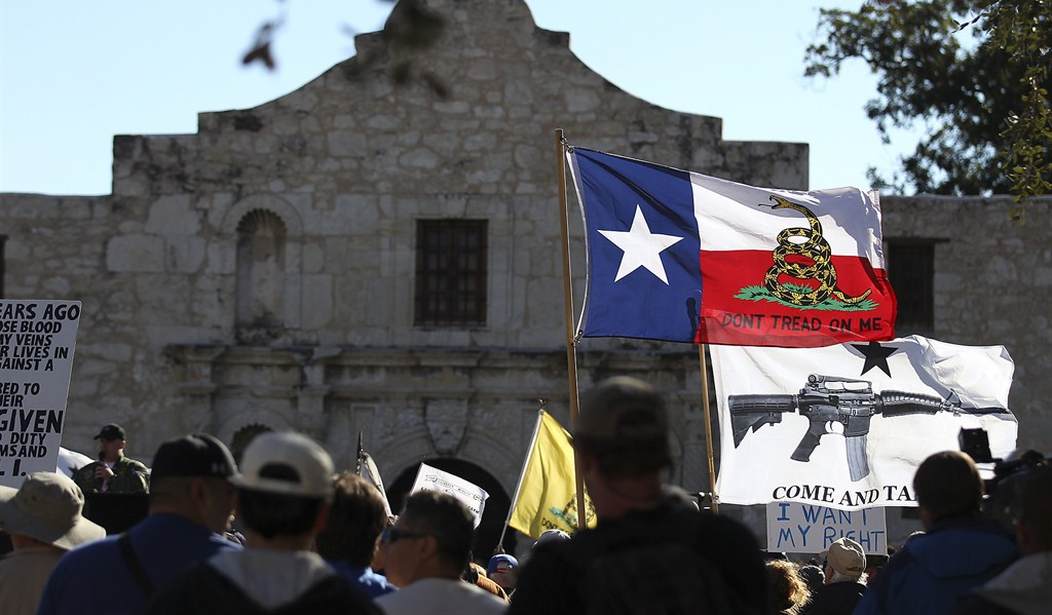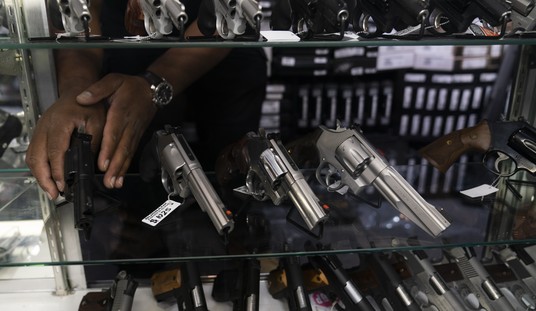Did a Michigan school district violate the First Amendment rights of a third-grader when officials demanded she take off a hat emblazoned with an AR-style rifle and the phrase “Come and Take It”? That’s the question at the heart of a lawsuit filed earlier this month by the minor in question and her father. The Firearms Policy Coalition, which is supporting the litigation, argues that the student’s First and Fourteenth Amendment rights were violated by the district’s refusal to let her wear her chosen headgear on “Hat Day”, and attorney John Monroe, who’s representing the family, notes that “[t]he Supreme Court ruled 50 years ago that schoolchildren do not shed their First Amendment rights at the schoolhouse gate,” referring to the Supreme Court’s seminal decision on student free speech Tinker v. Des Moines.
In their response to the lawsuit, the defendants claimed that Tinker isn’t applicable, and that a case from the 1980s called Hazelwood v. Kuhlmeir should be what guides the court. In that case, the Supreme Court ruled that a high school principle did not violate the First Amendment rights of high school students when they nixed the publication of articles about teen pregnancy and divorce because the paper was sponsored by the school and not independently produced by the students. Given that, the Court found that the school district had a legitimate interest in preventing the publication of articles officials found inappropriate and that might appear to have the “imprimatur” or endorsement of the school itself.
Since the hat in question was worn during “Hat Day”, the officials in the Durand Area Schools who’ve been sued claim that they were within their rights to demand the student take it off. After all, “Hat Day” is a school sponsored event “in which the defendants had greater latitude to control the style and substance of the plaintiff’s speech so long as it’s reasonably related to pedagogic concerns.” As a backup argument, the school officials added that even if the court sees Tinker as the appropriate precedent, their actions were still okay because they “reasonably believed that Plaintiff’s wearing of the hat would materially disrupt the learning environment or violate the rights of other students.”
On Friday, John Monroe delivered the plaintiffs’ reply to the officials’ defense, and did a fantastic job of spelling out the defects in their argument. I’m going to condense this down quite a bit, but you should read the entire reply here if you’re a 2A law nerd like me.
Although Defendants lean heavily on their view that C.S.’s wearing of the Hat was a “school-sponsored activity,” they make no effort to explain how students, parents, and members of the public would possibly perceive the message the Hat conveyed to bear the imprimatur of the school. Nor do they claim the wearing of the Hat was “part of the school curriculum, supervised by faculty members and designed to impart particular knowledge or skills.”
Defendants are trying to make “hat day” out to be something other than what it was – a day when staff and students were allowed to wear hats of their own choosing to school. Indeed, the RKES newsletter listing the various dress-up days for the week for Thursday, February 17 said simply, “Dress Up – Wear a Hat Day,” without indicating any pedagogical theme or lesson that hats needed to reflect. Where hundreds of RKES students wore a hat to school that day, Defendants do not say how anyone – student, parent, or member of the public – might perceive any one hat to bear the school’s imprimatur. Such a conclusion is not defensible.
…
Under Tinker, student speech is protected unless school officials reasonably forecast a substantial disruption. Defendants here did not do so. They only have come up with undifferentiated claims that the Hat might have caused fear, but they have not been able to articulate how that might occur. Neither have they explained how unspecified fear might lead to a substantial disruption. Instead, they only articulated a generalized preference that weapons not be displayed on clothing. But Tinker requires “more than a mere desire to avoid the discomfort and unpleasantness that always accompany an unpopular viewpoint.” An “undifferentiated fear or apprehension of disturbance is not enough to overcome the right to freedom of expression.”
If the court would rather look at this case through the Hazelwood lens than Tinker, Monroe believes it should still grant summary judgement to the third-grader (named only as C.S. in court filings); citing a two-decades-old decision in an Indiana case involving a high school student who wore a t-shirt with the image of a gun along with “The Creed of the U.S. Marine”.
The court applied Hazelwood because (since-reversed) circuit precedent required it to. It found that the school’s policy as applied to Grigg’s shirt did not meet Hazelwood because the Board did not show that banning Grigg’s shirt was reasonably related to any legitimate pedagogical interest. “While the Board certainly has an interest in preventing violence in its schools, it cannot merely incant ‘Columbine’ or ‘[a murder victim’s name’] like a magic spell allowing it to ban speech totally unrelated to those tragic incidents.” Accordingly, the court granted an injunction allowing Grigg to wear the shirt to school.
The parallels between Griggs and this case are striking, and in each case, cut against Defendants:
• The Griggs principal had a “personal objection to guns” which “colored her first impressions.” And while “some viewers, depending on their general attitude toward guns, might have a visceral, negative reaction upon first seeing the M16…it only takes a few seconds of study to realize that the gun is placed in the context of a relatively benign message of support for the military.” As in this case, the school’s failure to view the shirt in context “fatally weaken[ed] each of its arguments.”
• Concerns about Columbine and other school shootings, including the recent murder of a student, did not give the board a “legitimate pedagogical interest” in discouraging a “culture of violence,” since there was no showing that banning Griggs’ shirt had any “reasonable relation” to that interest. Viewed in context, “no reasonable observer would think that [the shirt] related to Columbine or other school shootings in any way.”
• In Griggs the administrator’s initial objection was only that the shirt was “inappropriate,” and did not contain the “post hoc rationalizations their attorneys” offered in court as to school shootings, a student’s recent murder, and violence in general. Here too, Leffel originally said merely that “weapons of any kind are not appropriate.”
• Finally, Griggs applied Hazelwood only because then-binding 7th Circuit precedent required it to. But that precedent has been overruled by N.J. so now the 7th Circuit, as well as the 6th Circuit, would apply Tinker, not Hazelwood, to a clothing message that was “not sponsored by the school (nor could it reasonably appear to be)”.
As Monroe argues, there’s no way that the school considered “Hat Day” to be of any special educational benefit to the students, though ironically they ended up giving C.S. a first-hand civics lesson on both the importance of our First Amendment rights and how citizens can use the courts to challenge unjust deprivations of our civil liberties; one that will hopefully end with these district officials learning a lesson of their own about what happens when you violate our fundamental freedoms.









Join the conversation as a VIP Member